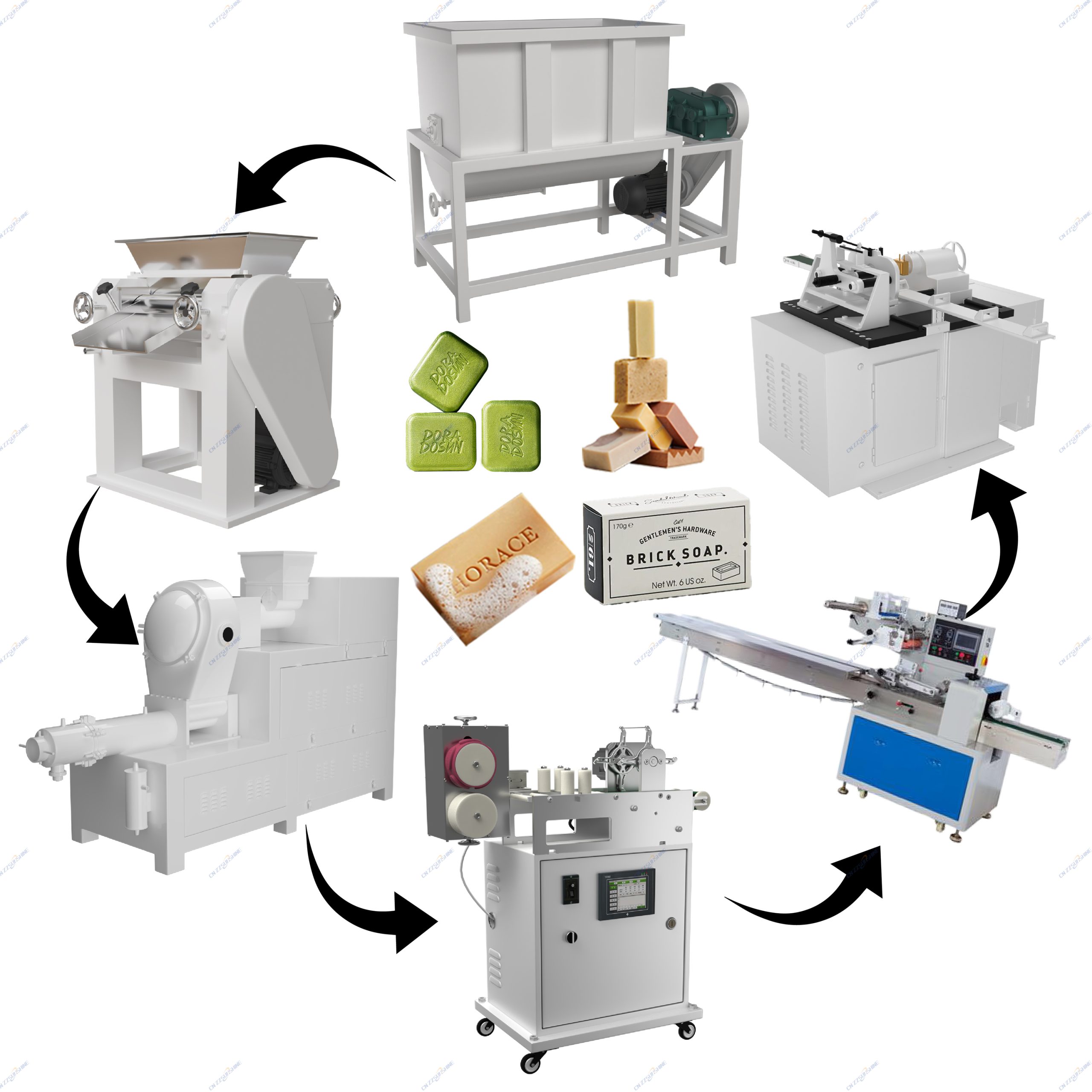The landscape of industrial soap manufacturing has undergone a significant transformation, driven by the demand for higher output, consistent quality, and reduced operational costs. Central to this evolution is the adoption of sophisticated **automatic soap production line** technology. These integrated systems streamline the entire process, from raw material handling to finished bar packaging, replacing fragmented manual operations with seamless automation.
At the heart of any robust **laundry soap making line** or **toilet soap finishing line** lies precision mixing. Modern **industrial mixer for chemical processing** ensures homogeneous blending of oils, fats, lye, and additives, forming the essential soap base critical for consistent bar quality. This mixture is then fed into the extrusion stage. Here, the **soap plodder machine for bar soap**, often a sophisticated **vacuum plodder**, plays a pivotal role. This equipment compresses and extrudes the soap mass under vacuum, eliminating air pockets to create a dense, uniform log essential for premium **laundry bar soap production line** output or smooth **bath soap making machine** products.
Following extrusion, the continuous soap log moves to cutting. Advanced **electric washing soap cutter** or **custom soap cutting machine** options provide exceptional precision, slicing the log into individual bars with minimal waste and exact dimensions. This stage is vital for both standard **beauty soap making line** requirements and specialized product formats. For high-end cosmetic applications, components like a **three roller mill for cosmetics** might be integrated earlier in the process to refine additives or pigments before mixing, ensuring unparalleled smoothness and dispersion in the final **toilet soap finishing line** product.
The advantages of implementing a complete **automatic soap production line** are compelling. Manufacturers achieve substantial increases in throughput while maintaining strict quality control standards across every bar. Labor costs decrease significantly, and material waste is minimized through precise **soap mixer** and **cutter** operations. Furthermore, the inherent flexibility of modular systems allows producers to efficiently switch between different soap types – be it robust laundry bars or delicate beauty soaps – maximizing production agility. For businesses aiming to scale efficiently and dominate competitive markets, investing in a state-of-the-art **soap making production line** is not merely an upgrade; it’s a fundamental strategic necessity.




